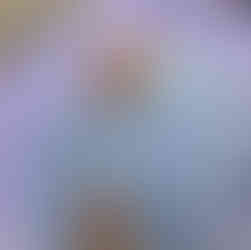Abnormal and Overgrown Beaks in Birds
- MBVC
- Feb 15, 2024
- 3 min read
Updated: Feb 16, 2024
Birds use their beak to eat, climb, chew, balance, preen and carry small objects. It is an important part of their anatomy, and taking careful care of their beak is a crucial part of good bird ownership. A healthy bird's beak is maintained through eating, chewing and general use - which means a bird should never require a beak trim unless a problem has occurred.
Common reasons for abnormal beak growth include:
Systemic and/or Internal Organ Disease
Infectious Disease
Traumatic Injury
Growth and genetic problems in chicks
Infection or disease of the beak (e.g., knemidocoptes/scaley face mite)
SYSTEMIC AND/OR INTERNAL ORGAN DISEASE
One of the most common diseases is chronic liver disease which can cause overgrown beaks, and this is most commonly found in birds on diets high in fat or cholesterol (e.g., all seed diet). Baby Bum and Budgie the budgerigars are an example of this, and the disease is controlled with diet change, liver supportive supplements and regular beak trims. There are diseases that can cause physical signs too, for example the budgie on the right had a brain tumour which led to skull and beak deformities.
INFECTIOUS DISEASE
One of the most common diseases to cause an overgrown beak is circovirus, this is known as Psittacine Beak and Feather Disease (PBFD) in parrots, but all avian species have their own strain of circovirus. PBFD can cause a brittle, overgrown beak that needs regular trimming or parts of the beak can snap due to its fragility (which can cause bleeding).


TRAUMATIC INJURY
Injury to the base of the beak can damage the cells responsible for growing the beak leading to changes in its appearance. These changes are permanent, and these birds require regular beak trims to ensure they can use their beaks. The Zebra Finch was adopted already missing part of her top beak, and due to not being able to grind down the lower beak when eating, the lower beak overgrows. The Conure in the middle got into an altercation with another bird, and due to extensive damage, the beak grows abnormally and requires trimming.
GROWTH AND GENETIC PROBLEMS AS CHICKS
A baby bird's (chick) beak can grow abnormally due to a few reasons (hand-rearing, inadequate nutrition, trauma or inappropriate humidity). The Blue and Gold Macaw below has scissor beak, a contributing factor is thought to be from hand rear feeding on one side only. This patient was also put in a brace at a young age to realign his beak.


DISEASE OR INFECTION OF THE BEAK
The beak - like any body part - can be affected by bacteria, fungus or parasites. One of the most common infections is Knemidocoptes (Scaley Face Mites). These mites burrow into the skin and cause infection as well as changes to the beak and surrounding skin. With early diagnosis and treatment, most birds will regrow a normal beak, but severe cases may experience permanent beak changes.


Management and Prevention
If you have have a pet bird, and are worried about their beak health, you can take the following steps to help identify problems early.
Annual Health Checks
Disease Screening (Circovirus, Avian Blood Panel)
A well-balanced diet of pellets, seeds and vegetables (for most but not all bird species)
Taking regular photographs of your pet bird for comparison
Reducing hazards in its environment (removing hazardous toys, supervising your bird and setting clear boundaries with other animals)
Consulting with an avian vet prior to breeding and hand rearing birds
Sharp does not equal long
Just as with nails, a bird's beak can become sharp but this is usually not abnormal. Some species of birds have a longer top beak than expected - such as Hahn's Macaws, Long-Billed Corellas, Baudin's Cockatoos and Hyacinth Macaws. Always consult with a veterinarian before conducting a beak trim.


Beak Trimming
Always consult an avian veterinarian prior to beak trimming! Birds use their beaks like we do our hands. Trimming carefully is essential - there are nerve sensors throughout which allow the bird to sense temperature, pressure and pain. There are risks involved if not done correctly, such as:
Bleeding
Splitting the beak
Damage to the tongue
Beak being cut to the wrong shape and the bird not being able to eat properly


















